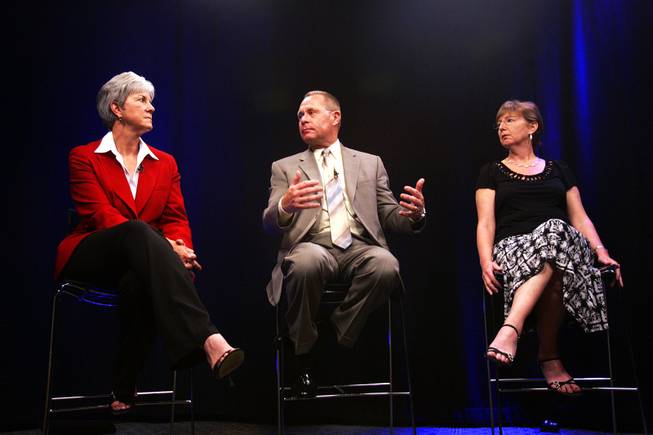
Hospital safety was discussed by, from left, Leslie Johnstone, executive director of the Health Services Coalition; Bill Welch, president of the Nevada Hospital Association; and Assembly Speaker Barbara Buckley at a Sun round-table discussion Tuesday.
Sunday, July 4, 2010 | 2 a.m.
Do No Harm: A Conversation
Records kept by the state of Nevada indicate that Las Vegas hospitals had 969 incidents where patients were injured, infected or otherwise harmed in 2008 and 2009, a Las Vegas Sun investigation showed. Sun health care reporter Marshall Allen discussed the problem of hospital-acquired injuries with a legislator and representatives from the hospital and insurance industries.
Do No Harm: Hospital Care in Las Vegas
- Prologue: A breakthrough in transparency
- Reporting is the first of its kind in Nevada
- Health care can hurt you
- Accident took her life, his heart
- Fall proves fatal for elderly patient
- Inadequate care, unspeakable pain
- Scarred for life by mistake in surgery
- Where I Stand: Fascination and frustration in reporting on Las Vegas hospital care
- Editorial: Preventing harm
- Health care leaders discuss Sun report’s findings
- St. Rose Dominican Hospitals to post data on quality
- State presses hospitals for full accounting of preventable injuries
Share your stories
Last Sunday the Las Vegas Sun reported that its analysis of area hospital records identified 969 cases of preventable infections, bone breaks, bed sores and other harm that were not present when the patient was admitted.
The Sun’s investigation, “Do No Harm: Hospital Care in Las Vegas,” has triggered a state probe to determine if some Las Vegas hospitals fail to report some of these incidents, as is required by law.
To discuss the newspaper’s analysis, the Sun hosted a conversation last week with three key participants in the health care community. They talked about the importance of safety in hospitals, the public’s right to know what’s happening in each facility and the state’s investigation. Sitting down with the Sun were:
• Assembly Speaker Barbara Buckley, who has worked on key legislation involving patient safety and making information about hospital quality public in Nevada.
• Leslie Johnstone, executive director of the Health Services Coalition, a group of 24 self-funded insurance plans that are pushing for better quality care in Nevada hospitals.
• Bill Welch, president of the Nevada Hospital Association, the industry’s main lobbying group in Nevada.
The conversation was transcribed by the Sun’s Nadine Guy, and edited for clarity.
What is the public to make of the 969 cases of preventable harm in Las Vegas hospitals?
Barbara Buckley: They should take away that we have an unacceptable level of incidents occurring here in Nevada. And we can do better, and I think we will do better with more transparency, more disclosure and actively working together to improve the status quo.
Leslie Johnstone: Patients don’t know where they can find out about the different levels of quality in hospitals. We want to help our participants with this, and that’s why we’re working through the hospital negotiations this cycle to make quality No. 1 on the agenda and try to get the focus off what the rates are.
But all of that is going to require some transparency. It’s complicated. A lot of different disciplines have to be involved, so the coalition would like to be at the table to work out what those reporting mechanisms should be. They need to be meaningful to the payers as well as the public.
Bill Welch: The public needs to be careful how it looks at the data that’s presented. It’s financial data that’s been analyzed — and without a clinical analysis of the patient’s chart, you don’t know if the condition was present at the time of admission. Medicare has done a similar study recently and has been challenged by a number of national organizations.
I do have to say that zero events is what we should be striving for, and I believe that hospitals are striving to have zero events. We can always do better, and it’s an ever-evolving process. Hospitals have procedures and policies in place and accreditation organizations we’re accountable to, including the state of Nevada, Medicare, the Joint Commission.
The Sun identified only the incidents of harm that hospitals themselves reported as not present at the time of admission. Are you saying that the hospital records are unreliable?
Welch: Yes, I am. If a patient comes in for a stroke or from a trauma accident, or some other medical issue, they’re first going to be treated for that particular incident. Then they will be re-evaluated (after admission) to see if there are other medical issues. There’s a fair number of times that they’ll identify additional medical issues that need to be resolved. Those are then charted.
Buckley: Well, if the data are wrong, then the hospital needs to correct its own data before they are submitted. There needs to be an opportunity to present that data so they can’t be misinterpreted. That needs to be examined. But when you say the data are faulty, we have to point out that it is the hospitals themselves submitting that data.
Are hospitals doing all that they can to prevent these harmful incidents?
Johnstone: I think the industry knows what to do. We just need to encourage it and that may mean having some of the dollars follow the quality. I think the coalition is prepared to do that.
Buckley: As you meet the CEOs and you meet the quality-care managers, they get it. They know what needs to be done, but sometimes I think it’s a result of our tremendous growth. For so many of these years, we’re just trying to keep up with everybody coming in the doors.
I recall an experience I had with a relative in a Las Vegas hospital. I thought the quality of care was really poor, especially compared with the same relative’s experience at UCLA. I saw a night-and-day in terms of quality. I didn’t put it down to apathy at all. I mean, some of the nurses who work in these hospitals are the hardest-working, best people that you’d ever want to have.
My firsthand impressions were that the growth was overwhelming them, and the quality, as a result, was taking more of a back seat.
I often wonder how much the nursing-staffing issue has contributed to any of this. We hear working conditions for nurses are a big reason for burnout and leaving — leading to more overtime for nurses, which has led to staffing problems and complaints about care. I think there are lots of other things that will end up being examined and compared with the data.
Welch: The hospitals are committed to providing quality and safe care to the patients in this community. But we’re dealing with a product that is driven by humans — the patient and providers contribute to the experience, and unfortunately sometimes situations occur. We try and do our best to try and ensure that doesn’t happen.
There are other factors in Nevada that you have to balance. You walk into our hospital emergency rooms and they are almost like a MASH unit, a war zone. And there are a number of factors that drive that. We have the highest unemployment rate in the country, which drives the uninsured population. Where do the uninsured get their health care?
Buckley: The emergency rooms.
Welch: So, if they’re hospitalized and they’re discharged, in many cases they have no alternative other than to come back to the hospital. If you look at other factors, we rank 46th in the nation in health status. We rank among the worst in the nation in binge drinking and smoking and cardiac and cancer. We also have a severe workforce shortage. I believe that we rank 46th in the country in primary care physicians-to-population.
In addition to the Sun’s findings, Nevada hospitals have some of the worst readmission rates in the country. What can insurance companies and legislators do to improve the quality of care?
Johnstone: Information is going to be very powerful for the insurance plans in directing patients to those facilities that provide the highest quality care. Then the total cost of that person’s care will likely be less than if they go to a lower-quality facility. I don’t think any of the payers are saying that they wouldn’t pay for quality, because then the total picture comes out to everyone’s benefit.
Have insurance companies always pushed for quality care?
Johnstone: There’s been a culture of “Get the lowest rates possible.” Payers are ready to figure out how to work with the hospitals and the physician groups. (Low reimbursement rates) may go toward one of the factors. There is not going to be one thing that will correct the situation.
On readmissions, that reflects a continuum of care back out to the physician community — whether patients have a physician, whether they understood when they needed to see that physician, whether they could afford their co-pays for their prescription drugs. A lot of things go into that and that why the coalition is trying to approach this as a systemic issue. Hospitals are a big piece, but they are not the only piece.
Welch: We’re encouraged that payers are starting to look at quality and not just financial indicators. If you look at reports that used to be produced by some insurance companies, they ranked and measured providers based on the average length of stay, the total cost and total number of procedures. That may not be in the best interest when it comes to quality.
So as we move toward this, I think that the hospitals are going to be responsive.
Do consumers have a right to know about these harmful incidents?
Welch: Absolutely, there’s sometimes different opinions on how it should be approached, but we’ve been supportive of it. We worked with the sponsor at the legislation in 2007 that enacted the state’s transparency website.
The Nevada hospitals came together in 2006, and if you’ll look at the transparency that we have in our website, it has all of the same information.
But you have not reported these different harmful events by facility.
Welch: We make sure we’re not putting raw data out there that are not consistently reported and are not accurately being analyzed and represented. That is our concern.
Johnstone: From a purchaser’s perspective, it has to be reported by facility because the ultimate audience is going to be the public or the user of the system. Not having it reported by individual hospital is not going to provide them any information.
Buckley: If it’s not reported by hospital it also doesn’t provide that competition. Every hospital is going to want a high ranking, and you only get that if you compare it by hospitals.
The incidents identified by the Sun appear to qualify as" sentinel" events.
Nevada law defines a sentinel event as “an unexpected occurrence involving facility acquired infection, death, or serious physical or psychological injury or the risk thereof.”
Hospitals have to report sentinel events to the state.
The inpatient hospital data the Sun analyzed showed 1,363 incidents statewide of infection, bone breaks, various types of harm that were not present at admission. But Nevada hospitals reported only 402 sentinel events in that same time.
Do the events identified in the hospital data fit the definition of sentinel event or not? Are the hospitals failing to report these incidents?
Buckley: It appears from the story and from what I’ve learned from state officials that cases that should have been listed in the Sentinel Events Registry were not. And, I think the state is going to go to each of the hospitals and say, “We want to examine every one of these cases and correct the Sentinel Events Registry if they were not reported.”
It’ll be interesting to see what the review shows. Certainly, I’m alarmed that there’s a discrepancy, and maybe the case-by-case analysis will tell us why. Is it because certain types of events were not considered serious enough? Was there some misunderstanding about the illnesses? I think it’s going to require that each case be examined to understand exactly what the discrepancy was.
Johnstone: It’s hard to respond until the state review is done, but it’s hard to imagine a few incidents here and there accounting for the wide variance in what the Sun identified. So, there’s clearly an issue. It may not be as big as those gross numbers, but there’s clearly a problem.
Welch: I believe that the hospitals are in good faith trying to report all sentinel events as they occur in their facilities. There’s incentive for them to do it because it provides some certain amount of legal protection as far as penalty and fines. So it’s to the hospital’s benefit to report.
But more important, we encourage our employees to report so we can be evaluating them. We look at every incident, whether it’s an adverse event or sentinel event, as a serious event. And we want to do a root cause analysis so we can be assured that we’re providing quality care.
About the data that the Sun extracted — again, from financial records — if those incidents occurred while the patient was in the hospital, I wouldn’t disagree with you that those would qualify as a sentinel event.
According to the data, they all occurred while the patient was in the hospital.
Welch: But until you go back and review the clinical chart, you don’t know whether the patient presented with that condition. Once the state has completed its analysis, it’ll be interesting to see how many of those truly turn out to be sentinel events. The hospitals are committed to filing the sentinel events on an individual basis to the state.
Why did legislators in 2002 allow sentinel events to be reported as an aggregate number?
Buckley: The hospitals were very resistant when we negotiated the Sentinel Events Registry. They indicated that they were concerned about lawsuits. We made the point that lawsuits are being curtailed in this (malpractice cap) legislation and that quality has to be assured.
It was our first step, and certainly the hospitals want to see aggregate data reported and not by institution. Some of the institutions are concerned that it might hurt their image and their ability to attract patients.
I think (reporting by facility) is the coming wave, it’s inevitable. It’s certainly being done much more aggressively in other states, and the Legislature has made it clear we’re moving in this direction. The employers have made it clear this is the future, and I think in 10 years we’ll be wondering why was it so slow.
Bill, why did all the hospitals except North Vista refuse to be interviewed for our story?
Welch: My understanding is that you had very specific questions regarding the data and that questions would lead down to asking about specific cases. It’s a potential risk that we would be disclosing information that could ultimately lead to the disclosure of the patient, which would be a violation of federal privacy laws.
The questions had nothing to do with individual patient cases. We’re aware of federal privacy laws. Speaker Buckley, what do you think about the hospitals’ reasoning?
Buckley: If I were a hospital executive, I would have declined to talk about any of the individual cases that were listed in your story. But if you ask me my position on the Sentinel Events Registry, or if there was some mix-up with the data, or why the numbers do not match, or what we should be doing about quality — I would have answered all of those questions.
What are your next steps related to this issue?
Johnstone: The coalition would really like this to be a sea change — to have it be a positive event because the hospitals could show improvement year-over-year in the areas that are publicly reported.
Welch: The hospitals will continue to work in a collaborative approach for the ever-expanding transparency that we have discussed today.
With regard to sentinel events reporting, we will be bringing this issue up at the next meeting of the Hospital Association’s patient safety committee. We’ve always encouraged appropriate and accurate submission of the data. So we will be going back and doing self-assessments to make sure that we are. There’s no advantage to us to have an article like this come out. We’re going to take this and take it to heart and we’re going to take a good look at it.
Buckley: Assemblywoman Sheila Leslie was looking at how the data weren’t reported and putting forth some legislation that will eliminate any loopholes in reporting sentinel events. She, like most of us, wants to see the results of the state’s review. It’s going to be a file-by-file review and depending on what the hospital sends in, the state will forward to the regulator.
Welch: They will have to go case by case, every individual patient chart.
Buckley: It’s a painful way to explore improvements to the system.



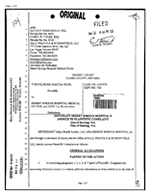
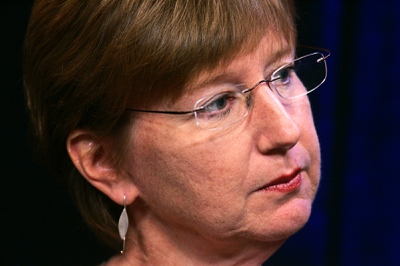
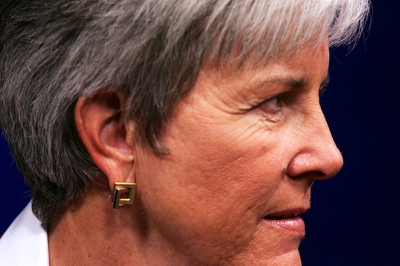
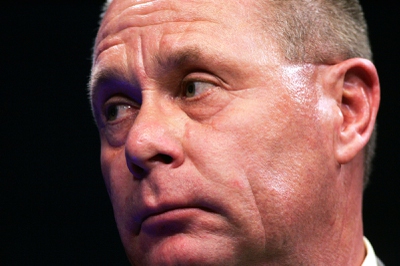

Join the Discussion:
Check this out for a full explanation of our conversion to the LiveFyre commenting system and instructions on how to sign up for an account.
Full comments policy